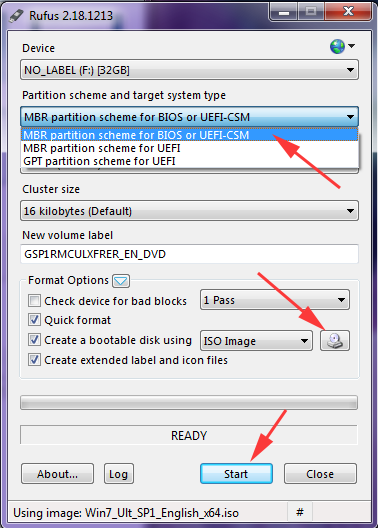

- #WINDOWS 7 UEFI ISO DOWNLOAD HOW TO#
- #WINDOWS 7 UEFI ISO DOWNLOAD INSTALL#
- #WINDOWS 7 UEFI ISO DOWNLOAD UPDATE#
- #WINDOWS 7 UEFI ISO DOWNLOAD WINDOWS 10#
#WINDOWS 7 UEFI ISO DOWNLOAD INSTALL#
To install Windows from iso file in legacy mode:ġ. It is ideal for older type of computers or windows 7 install in particular.

#WINDOWS 7 UEFI ISO DOWNLOAD WINDOWS 10#
This is also valid for installing Windows 7 using CSM mode, installing Windows 8/8.1 using CSM mode and installing Windows 10 with CSM mode. This procedure applies to installing windows 7 using legacy mode, installing Windows 8/8.1 with legacy mode and also for installing Windows 10 with legacy mode. Installing Windows in Legacy Mode (Windows 10, Windows 8/8.1 or Windows 7): After installing Microsoft Windows 10 from iso go to system Bios and re-enable secure boot. Hard drive format must be in GPT type or let the install utility auto format your disk.ħ. Select boot from USB in bootable order under system Bios.Ħ. Disable secure boot in the system Bios.ĥ. Use Rufus utility to create bootable media, select UEFI mode. (Must have the folder (EFI\boot\boot圆4 x.efi).Ģ. Download Windows ISO file, make sure it is UEFI compatible, ie UEFI ready. This procedure is for installing Windows 10 from ISO file (You can use this step by step procedure for preparing any bootable media, not just Microsoft Windows)ġ. It can also be used for all brands of computer including Dell, Lenovo, HP, Toshiba, Acer and many others. The method described below applies to installing Windows 10 using uefi, installing Windows 8/8.1 with uefi mode and also for installing Windows 7 using uefi mode. Installing Windows 10/8/8.1/7 in UEFI mode: In comparison if you have an old computer then it may not be UEFI compatible therefore you need to adjust your BIOS settings and hard drive format accordingly as described below. However, you can assume that most modern ISO installation files for modern systems or utilities are UEFI compatible. The format of the installation files in the USB drive must comply with the requirements in order to install windows successfully. This instruction applies to all Microsoft Windows operating systems including:
#WINDOWS 7 UEFI ISO DOWNLOAD HOW TO#
In this section we will show you how to install Windows 10 from USB drive. How to Install Windows 10/8/8.1/7 From USB Drive:
#WINDOWS 7 UEFI ISO DOWNLOAD UPDATE#
If your PC Windows 10 not booting after update or Windows 10 not starting and stuck in automatic repair loop please check our blogs section guide Windows 10 not Starting.įor more advice on how to troubleshoot PC problems see our PC Repair Advice and Troubleshooting Tips page, or for full lists of our current PC Blogs see our Blogs Section.Ģ. To simplify the booting process options, we have developed a unique UEFI/MBR boot table that users can use as a reference guide when they encounter booting issues such as Windows 10 not booting, see section 4 below. If Windows 10 won’t boot or you have failed Windows installation then check the booting table below first.

This guide aims to address failed USB Windows 10 installation and the correct procedure to fix and avoid Windows booting problems. For example, Microsoft Windows 10 is mostly installed using bootable USB drive. Modern systems have evolved in the way they boot the operating system and have increased in complexity. However, the same rule will still apply if you are using a CD/DVD drive with a slight difference. In this article the focus is on preparing external bootable USB drives, which can be external USB flash drive or external USB hard drive. However, small number of users may still be using the traditional CD/DVD drives for installing windows due to its simplicity. This method is more convenient when compared to the traditional CD/DVD drive method. Microsoft Windows installation is nowadays mostly carried out using USB flash drives. How to Install Windows 10/8/8.1/7 From USB Driveįor Windows 11 install please see our other blog for complete details on installing Windows 11 on new and old PCs with instructions for settings for TPM, Secure Boot, UEFI and how to bypass the system requirements.


 0 kommentar(er)
0 kommentar(er)
